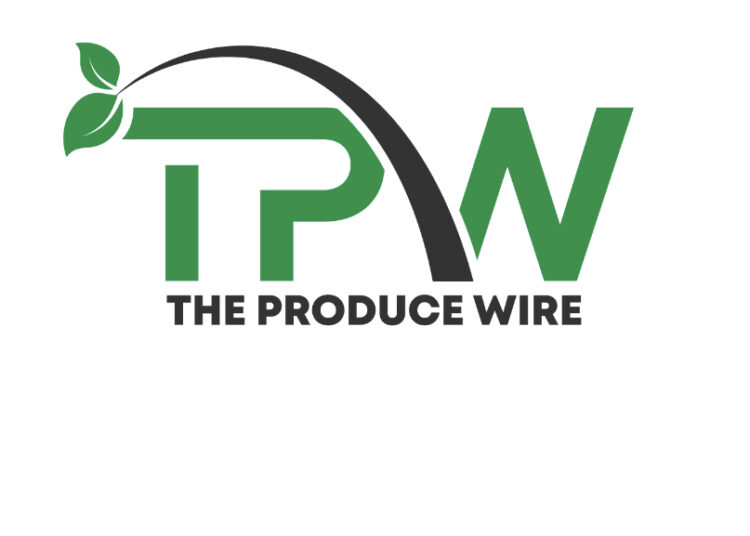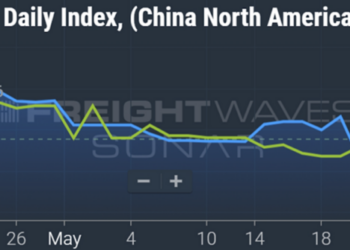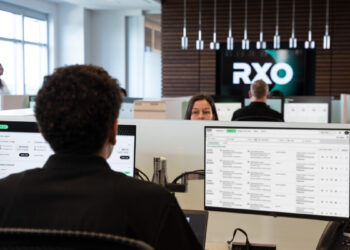Autonomous rail vehicle company Parallel Systems says it has publicly demonstrated how its rail vehicles connect with each other via bumper to bumper at its test track in Southern California.
This connection is the one of the first steps toward putting multiple rail vehicles together and creating platoons of up to 50 rail vehicles. Each rail vehicle functions like a rail car: A container sits on two robotlike vehicles with train wheels. Parallel Systems has said the technology would enable rail to compete with trucks.
Instead of coupling rail cars with each other and connecting their air brake lines, the bumpers of each vehicle maintain contact via controlling tractive effort, according to the Los Angeles-based company. There is a small air gap between the containers, and the pushing action through the rail vehicle bumpers reduces the average aerodynamic drag of the platoon.
“Our platoon testing began in October 2023, and the performance has been consistent with our modeling and simulations, which is exciting right out of the gate,” Parallel Systems co-founder and CEO Matt Soule said in a Wednesday news release. FreightWaves reported in September that the company would be conducting test runs this fall.
“The vehicles have remained connected according to plan, allowing us to plan expanded platoon testing with increased speeds, greater number of vehicles, and braking,” Soule said.
Individual rail vehicles will have the ability to separate from the platoon, and those rail vehicles can bypass classification yards and independently proceed to varied destinations, according to Parallel Systems, or they may split from the platoon in order to keep rail crossings clear. As a result of this technology, railroads may also be able to reduce their reliance on classification yards or even eliminate them and repurpose the land, the company said.
Each rail vehicle will have self-contained brake systems and so they do not need connecting air lines, the company said.
“Introducing platooning will help the rail industry address a range of critical challenges, including sorting and routing freight more quickly and keeping railroad crossings open for roadway and pedestrian traffic,” Soule said.
Earlier this month, Parallel Systems said it was working with Australian company and rail freight network manager Arc Infrastructure to develop a working prototype of an autonomous rail container wagon. The technology would be used for future container transportation in Perth, Australia.
And in August, FreightWaves reported that two subsidiaries of short-line operator Genesee & Wyoming were seeking a permit from the Federal Railroad Administration to test Parallel Systems’ technology on portions of track in Georgia.
Subscribe to FreightWaves’ e-newsletters and get the latest insights on freight right in your inbox.
Click here for more FreightWaves articles by Joanna Marsh.
Related links:
Parallel Systems readies 2nd-gen autonomous rail vehicle for test runs
G&W short lines want to test autonomous rail vehicle technology
Autonomous rail vehicle maker outlines next steps
The post Parallel Systems tests autonomous rail vehicle technology appeared first on FreightWaves.














